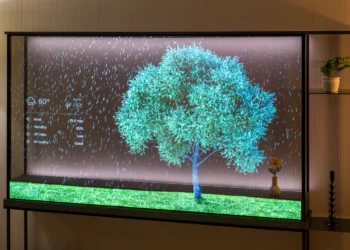Moxie Robot is aimed to be shipped worldwide by October after Embodied beta-tests it with a wider group of families.
Any robot with an AI designed to imitate or help humans is a complex machine to design, social home robots being so much more difficult to get right. Any company that wants to mass manufacture robots at this point needs to have both the technical capabilities and a long-term sustainable business case that’s more comprehensive and has a clear outcome ready to enter the market.
What Is Moxie?
To cater to the social and emotional needs of children specifically, a social robotics company called Embodied is all set to launch a new robot called Moxie, a social “friend” for children aged 6-9 years. According to the company statement, Moxie is “designed to help promote social, emotional, and cognitive development through everyday play-based learning and captivating content.”
In some ways, it does look like the Moxie robot is all set to find success especially right now in the pandemic when both kids and parents are in dire need of some extra hands on deck. Embodied, founded in 2016 by USC robotics professor Maja Matarić partnered with Paolo Pirjanian. is about combining the desire to use robots to help people in a personal manner, and portrays Pirjanian’s passion for “lifelike animated characters”. While the main application for a robot in this regard seems to be for hospice and elder care, Pirjanian feels that kids need more help with their social-emotional development and this project offers a better, immediate impact.
How Does Moxie Robot Work?
Moxie robot will help kids improve their social-emotional and communication skills via relatively shorter daily interactions, as seen in a demo of an alpha unit armed with the early software. The robot is seen to be performing reasonably well in its environment. It does bode well to keep in mind that different factors will affect the robot’s output like the Wi-Fi connection, lightings, noise, etc.
Moxie is made to specifically keep its interactions focused on the social and emotional development of kids, unlike previous robots in the market that come with generic, all-over-the-place functions. With initial interactions spanning 15-20 minutes, extending to 3-5 times a week over the next six months. The company deems this timeline necessary for Moxi to have a plausible impact on the child. What’s even more commendable is the fact that this robot is designed to enforce limitations by getting tired and falling asleep if a child stimulates it too much.
“Of course, kids are going to love the robot, but then they can also quickly lose interest, and we’ve seen this happen over and over again,” Pirjanian has been quoted as saying. “So it was something that was top of mind for me from the very early days, even before the inception of the company.” For him, the key to long-term interest is Content, ensuring kids are engaged with fun stuff at all times.
Embodied Is All About Commitment!
Embodied has a team of 20 people developing content for the Moxie robot, including the company’s own experts in neuroscience, psychology, and child development. An external group of advisers from Autism Speaks and the Rogers Foundation also weigh in their suggestions. The aim is to have at least twelve weeks’ worth of content at launch, and eventually take it to the full 52 weeks of content.
Embodied trained Moxie with conversations obtained from kids from almost a hundred families over more than a year. This allowed the company to narrow down common themes and topics the robot can use to talk about with kids, like school, friends, bullying, doctor-visits, etc. Any kind of user-generated content won’t be allowed to be input in Moxie since Pirjanian understands how potentially damaging that is. “There is a big responsibility we are taking on in terms of helping children with social-emotional development, so we don’t want people just haphazardly putting content on the robot.”
Embodied takes data protection extremely seriously and has placed 90% of the processing on the robot itself. Info like camera images, in particular, will stay local and anything that ends up in the cloud is anonymized with a key that a parent sets, so even the company itself can’t exactly tell where the data comes from.
How Is Moxie Robot’s Data Managed?
Embodied uses the Vineland Adaptive Behavior Scale for continual management of how the children Moxie works with progress, sharing the results with parents via their app. Moxie is designed to be resilient to kids’ tantrums and has been programmed to handle complex situations by saying things like “I don’t want to help you” or “I don’t want to talk about it” or “I don’t want to share anymore”, combined with gentle insistence, and moving on and coming back to important topics.
To control serious situations like being bullied at school, the company says, “We’re looking for both specific trigger words and also intent, and if there are risky things that the child is having a conversation with the robot about, we’ll flag those and notify the parent through the parent’s app.” Moxie will initially be availabl\e free of cost through a beta program to get more feedback from a wider group of families. The production goal is to ship robots to consumers by October.
Moxie Robot Price
Pre-order the Moxie robot against a fully refundable deposit of US $50, which will be added to the total $1,500 price. It will include a year’s worth of content, afterwards, you will be charged an additional $60 per month. This isn’t designed to be a toy, it’s a tool. If you feel like your kid is in need of somethings like the Moxie robot, it is well worth an investment!





![Top 10 Best Rechargeable Light Bulbs To Buy In [year] 5 best rechargable bulbs list](https://www.digitalphablet.com/wp-content/uploads/2023/08/8d6c90f3-488f-459c-8795-0da569b4bd9a.jpg)